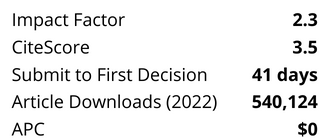Monitoring progress towards the targets for access to safe drinking-water and sanitation under the Millennium Development Goals (MDG) requires reliable estimates and indicators. We analyzed trends and reviewed current indicators used for those targets. We developed continuous time series for 1990 to 2015 for access to improved drinking-water sources and improved sanitation facilities by country using multilevel modeling (MLM). We show that MLM is a reliable and transparent tool with many advantages over alternative approaches to estimate access to facilities. Using current indicators, the MDG target for water would be met, but the target for sanitation missed considerably. The number of people without access to such services is still increasing in certain regions. Striking differences persist between urban and rural areas. Consideration of water quality and different classification of shared sanitation facilities would, however, alter estimates considerably. To achieve improved monitoring we propose: (1) considering the use of MLM as an alternative for estimating access to safe drinking-water and sanitation; (2) completing regular assessments of water quality and supporting the development of national regulatory frameworks as part of capacity development; (3) evaluating health impacts of shared sanitation; (4) using a more equitable presentation of countries' performances in providing improved services.
Skip Nav Destination
Article navigation
Research Article|
December 17 2012
An exploration of multilevel modeling for estimating access to drinking-water and sanitation
Jennyfer Wolf;
1Department for Public Health and Environment, Evidence and Policy on Environmental Health, World Health Organization, 20 Avenue Appia, CH-1211, Geneva 27, Switzerland
E-mail: wolfj@who.int
Search for other works by this author on:
Sophie Bonjour;
Sophie Bonjour
1Department for Public Health and Environment, Evidence and Policy on Environmental Health, World Health Organization, 20 Avenue Appia, CH-1211, Geneva 27, Switzerland
Search for other works by this author on:
Annette Prüss-Ustün
Annette Prüss-Ustün
1Department for Public Health and Environment, Evidence and Policy on Environmental Health, World Health Organization, 20 Avenue Appia, CH-1211, Geneva 27, Switzerland
Search for other works by this author on:
J Water Health (2013) 11 (1): 64–77.
Article history
Received:
June 15 2012
Accepted:
November 12 2012
Citation
Jennyfer Wolf, Sophie Bonjour, Annette Prüss-Ustün; An exploration of multilevel modeling for estimating access to drinking-water and sanitation. J Water Health 1 March 2013; 11 (1): 64–77. doi: https://doi.org/10.2166/wh.2012.107
Download citation file:





%20cropped.png?versionId=5950)